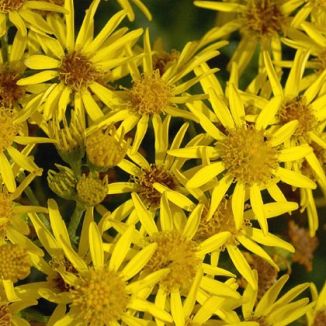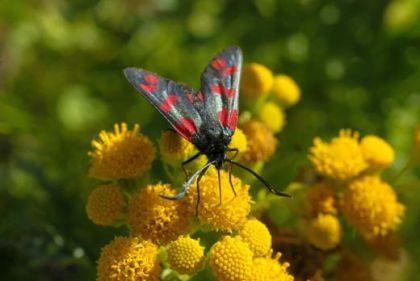Listed under the Noxious Weeds Act 1936 are several wild plants. Among these is Common Ragwort or Ragweed which is a well-known perennial throughout the country. It grows in grassland where it gives a superb, if unwelcome, blaze of gold from June to November. The plants can grow to 1m high, bearing dense, flat-topped clusters of bright yellow flowers. Each individual flower (15-25mm across) has between 12 and 24 spreading ray florets and a centre of disc florets. Behind the corolla are black-tipped, overlapping bracts. The dark-green leaves are deeply pinnatifid with toothed segments. This plant contains alkaloid poisons which could cause liver damage in cattle and horses, which is the reason for its inclusion on the Noxious Weeds listing. There is also a variety which grows in coastal districts and which does not have ray florets, pictured on this page being visited by a Six-Spot Burnet. Formerly known as Senecio jacobaea, this native plant belongs to the family Asteraceae.
I first identified this plant in Derrynane, Co Kerry in 1976 and photographed it in Gibletstown, Co Wexford in 2007. The rayless version was identified and photographed in Kilmore Quay, Co Wexford in 2007.
If you are satisfied you have correctly identified this plant, please submit your sighting to the National Biodiversity Data Centre




